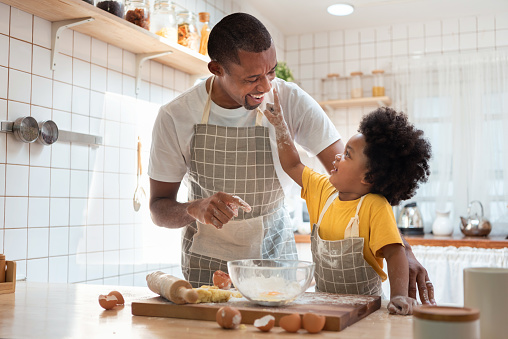9 Beginner-Friendly Baking Tips n’ Tricks
Baking cakes from the ground up isn't tricky, however, there are a few points to keep in mind before getting started to prevent baking mishaps. Once you've been baking entirely from a scratch for a long time, you might run across one problem which you just can't really seem to solve every time you baked a cake. MRSLM has compiled the greatest introductory baking advice for the baker in you, be it to refine skills or simply get familiar with basics. Before we begin, remember one thing: every baker has to build from somewhere, but it doesn't imply that they need to do it by themselves! It takes time to develop a baking instinct. You'll get better at baking as you practice! Failure is unavoidable, but if you have to choose tenacity over despair, you will almost always succeed. Now let’s hop on the train of secrets every baker ought to know!
Do Not Leave the Leftovers of Measuring Cups
It is a bother to measure ingredients like oil, honey and peanut butter. Spritz or grease the measuring cups prior to continuing with measuring similar ingredients to clean them up entirely, without any fuss. In addition to that, using a non-stick silicone scraper to completely remove all the residues in the cups goes a long way.
Do Not Rush
If you're already strapped for time, don't ever think of baking! Baking a special recipe in a hurry is a disaster waiting to happen, notably if you're just a beginner. Follow the instructions, check if you have all of the materials, prepare everything, preheat the baking oven, and oil your dishes. The better your baking items are prepped; the better outcome can be expected. Thus, never rush!
Do Not Fill the Pan Till its Brim
We've undoubtedly made the same mistake when baking a cake for the very first time. If this is your baking debut, trust us when we say that you should not fill your baking pan to its brim. Allowing about 2/3 of the baking dish to be filled will enable the batter to spread and swell without spilling. Do not fret if you have leftover batter. The excess batter may be used in a variety of ways.
Use the Right Bakeware
The appropriate equipment would not only enhance the cooking experience 5 times simpler, but it will also ensure that you follow the instructions precisely. The baking pan is by far the most critical aspect in baking, secondary only to the base mix. It might be difficult to find the correct baking dish or pan with so many options! We strongly advise purchasing high-quality non-stick bakeware. Cheaper substitutes may have inconsistent depth, be covered with hazardous coatings, or end up causing your baked items to clump. The use of glassware or ceramic plates might have a detrimental impact on a recipe. Glass and ceramics require a longer time to heat than needed and retain heat once they've been taken out of the oven. Thus, our best recommendation is to choose a heavy-duty metal pan.
Measure Ingredients Properly
Exceptional baking necessitates exact proportions, tried-and-true procedures, and tried-and-true recipes. As a result, among the most important baking techniques is to measure ingredients correctly. It will be far more precise to measure your components by weight rather than volume. All you'll need is a dish and a scale to get started.
Do not Underestimate Room Temperature
Adhere to a normal temperature component whenever the recipe calls for it, the most frequent being butter. Now when you whisk your sugar and butter together, you get a wonderful and frothy batter. Temperature changes produce a variety of consistency, almost all of the time the one you rarely desired. It may also produce inescapable lumps, meaning all of your great labor is wasted.
Do the toothpick test
You can tell if your cakes are ready by conducting a toothpick test. Whenever you believe your cake is done, all you have to do is insert a fresh toothpick into its center. You would like the toothpick to show up out spotless once you draw it back out. Your cake is baked well when it is spotless. It is not prepared to head out from the heat yet if the batter is clinging to it.
Always use a Parchment Paper
It is vital to oil your pan adequately irrespective of the nature of the bakeware you have selected. You might assume that greasing a non-stick pan with oil is pointless, yet it represents a substantial impact. If you want to make sure your cake doesn't remain to the bottom and sides of the pan, parchment paper will be your best friend. There are various options, such as oiling or flouring, but nothing beats a decent parchment paper for making your cake look its best!
Sift Your Dry Ingredients Together
Sieve all your dry ingredients together. The dry ingredients commonly are flour, bicarbonate of soda, baking powder, salts, icing sugars, cocoa powder and so forth. Follow this even though the recipe instructions don't specifically call for it. Sifting provides for the lightening of your materials as well as the incorporation of airflow. Sifted dry components are relatively simple to combine in the cake batter compared to non-sifted dry ingredients because they become lighter. Not just that, but sifting guarantees that all of your dry ingredients are combined into a consistent combination before you begin working with the batter and base mix.






